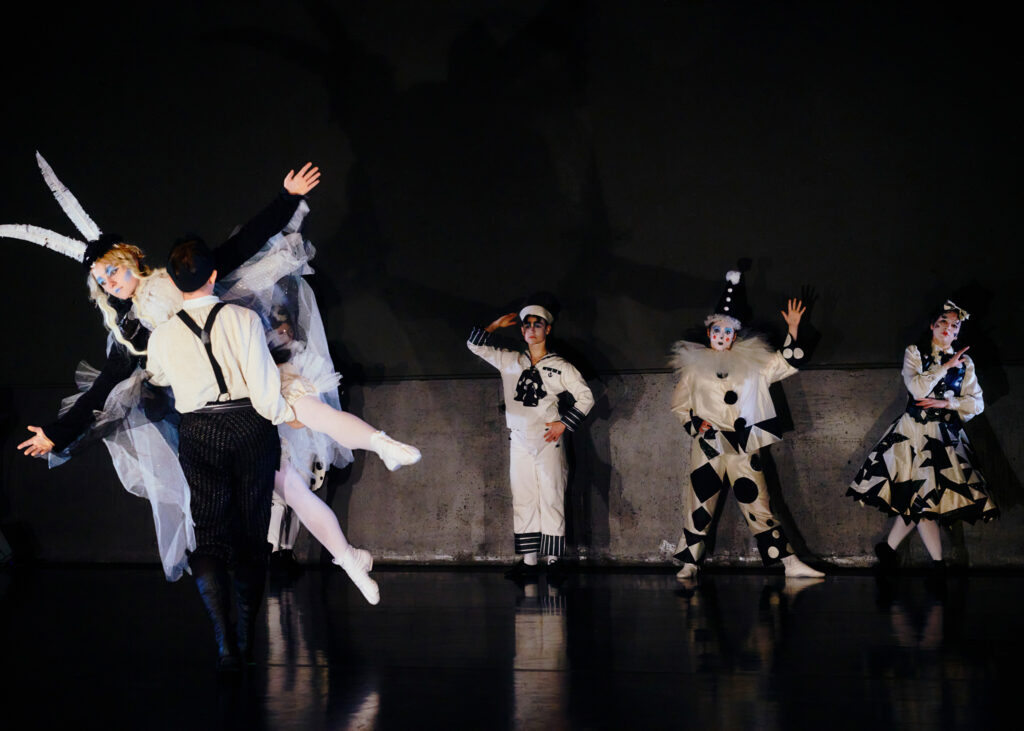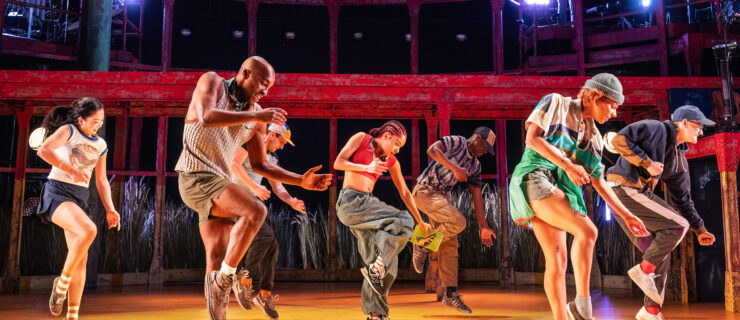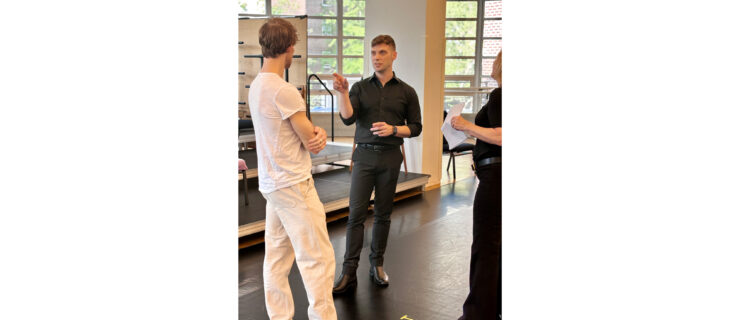Ballez’ Katy Pyle Creates a Coppélia Rooted in Queer History
Since founding Ballez in 2011, Katy Pyle has reckoned with ballet’s gendered and binary structures through their radical reinventions of works from the ballet canon, including The Firebird, Sleeping Beauty, and Giselle. Their latest piece, Travesty Doll Play Ballez (after Coppélia), explores Coppélia’s history as a travesty ballet—Paris Opéra principal ballerina Eugénie Fiocre originated the role of Franz in 1870—and features an entirely trans and nonbinary cast.
Ahead of the show’s May 24–26 run at Chelsea Factory in New York City, Pyle sat down to discuss their research and rehearsal process.
What drew you to Coppélia, and how does this work relate to your other reimaginings of classical ballets?
In 2017, I was working on a dance-based project inspired by the artist Greer Lankton. She was a trans woman, and she made these really incredible dolls that were versions of herself and her friends. It made me think about Coppélia, and the power dynamics that existed between Dr. Coppélius and Coppélia. Within the context of ballet, I’ve also felt like a doll my whole life—I’d put on performance makeup and experience this dysphoria or disembodiment when I looked in the mirror. I began to properly research Coppélia’s history as a travesty ballet in 2021, and I was like, “Of course I have to do this!”
The same themes always come up when I look back at my work: intense suffering and pain often caused by relationships to expectations, which is deeply intertwined with ballet. There are often these central characters going through something, whether it’s death, transformation, or reclamation. But there is also always joy—it’s very important that there is joy as a way out.
What has the choreographic process for the show looked like?
I started with a lot of improvisations with the dancers moving each other’s limbs around. I want to play these push-and-pull games where we get into positions, almost like dolls, to see what it feels and looks like, and we go from there.
The dancers also learned a men’s variation of their choice as an exercise, and the show’s version of the mazurka was born from that. Creating that section felt like a full fantasy to me—we were playing together, figuring out how we could make it weird and doll-like. I channeled John Jasperse and Cunningham a bit, thinking about the physics of movement in a mathematical way.
What were some of the inspirations for the costumes and makeup?
Karen Boyer, our costume designer, created this incredible look for the show based on concepts, eras, and photographers I’d researched, including Claude Cahun, a French surrealist photographer from the 1910s and ’20s whose work explored their gender identity; lesbian salon culture in turn-of-the-century Paris; the Weimar Republic era in Berlin—just queer extravagance and theatricality on display.

What were some of the takeaways from your research process?
Diving into the world of travesty ballets was so affirming. To know that these performers—who were considered to be women (I’m not sure how they might identify now in the context of our current time)—had fans and power and were honored and celebrated. I’ve always been really into “RuPaul’s Drag Race,” and I drew these parallels to modern-day drag and how much people love it. My own experience with drag was especially formative. I had just stopped ballet and had this huge,180-degree moment as a freshman in college where I felt really powerful and able to tap into these qualities of strength and power through drag, and it let me step into these parts of myself that I’d never felt like I was allowed to be in before.
How do you make space for joy when there are so many other heavy feelings present in your work?
I think they really go hand in hand. To share traumatic things requires a certain amount of safety, connection, and support, but these feelings also yield a lot of joy. If something isn’t fun for me in the studio, I won’t want to go, so I try to find the things that provoke this feeling of life force.
At the end of the day, I want to allow the dancers to feel really checked into themselves. That’s ultimately what I want to project into the ballet world—dancing from a sense of connection and embodiment versus stress and disconnection.





